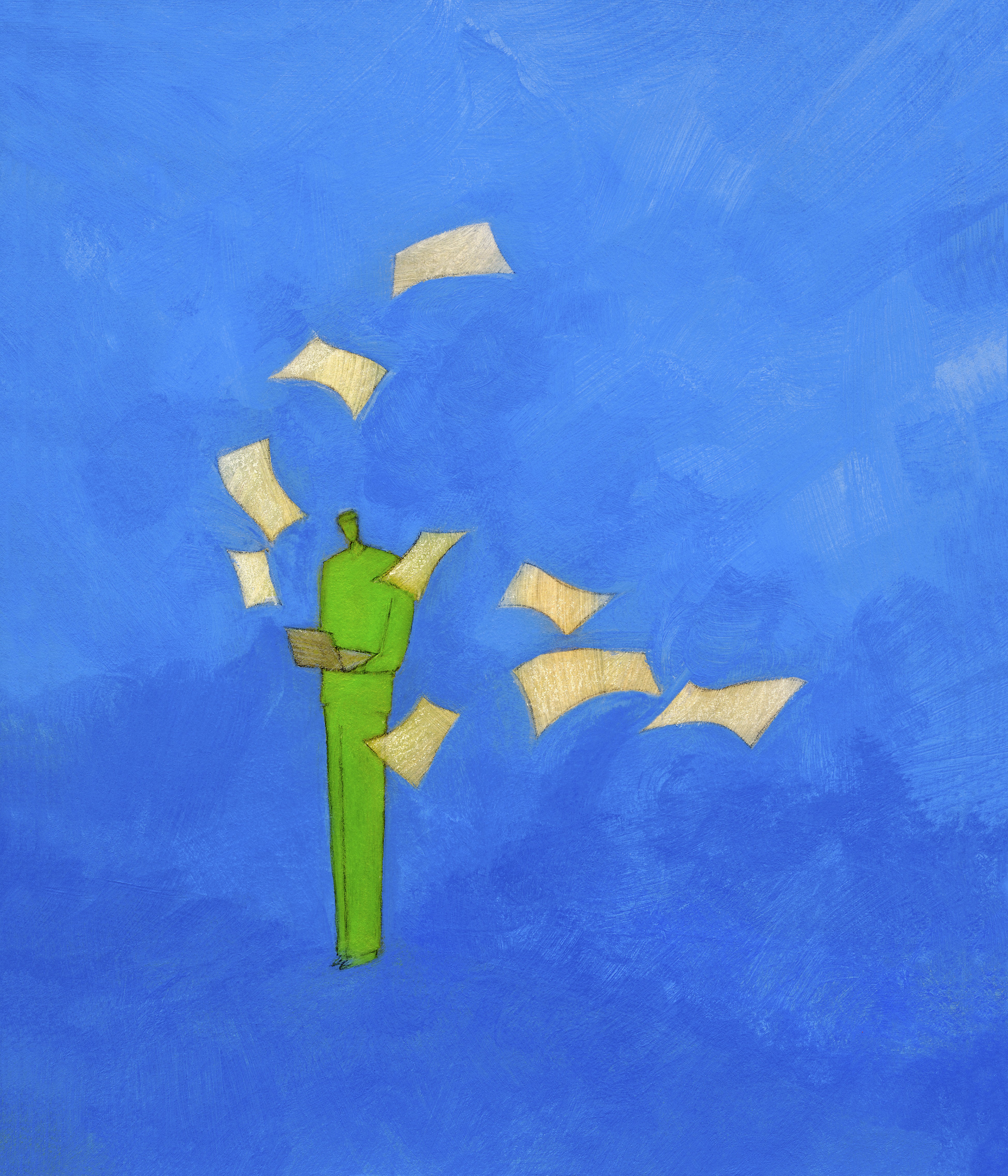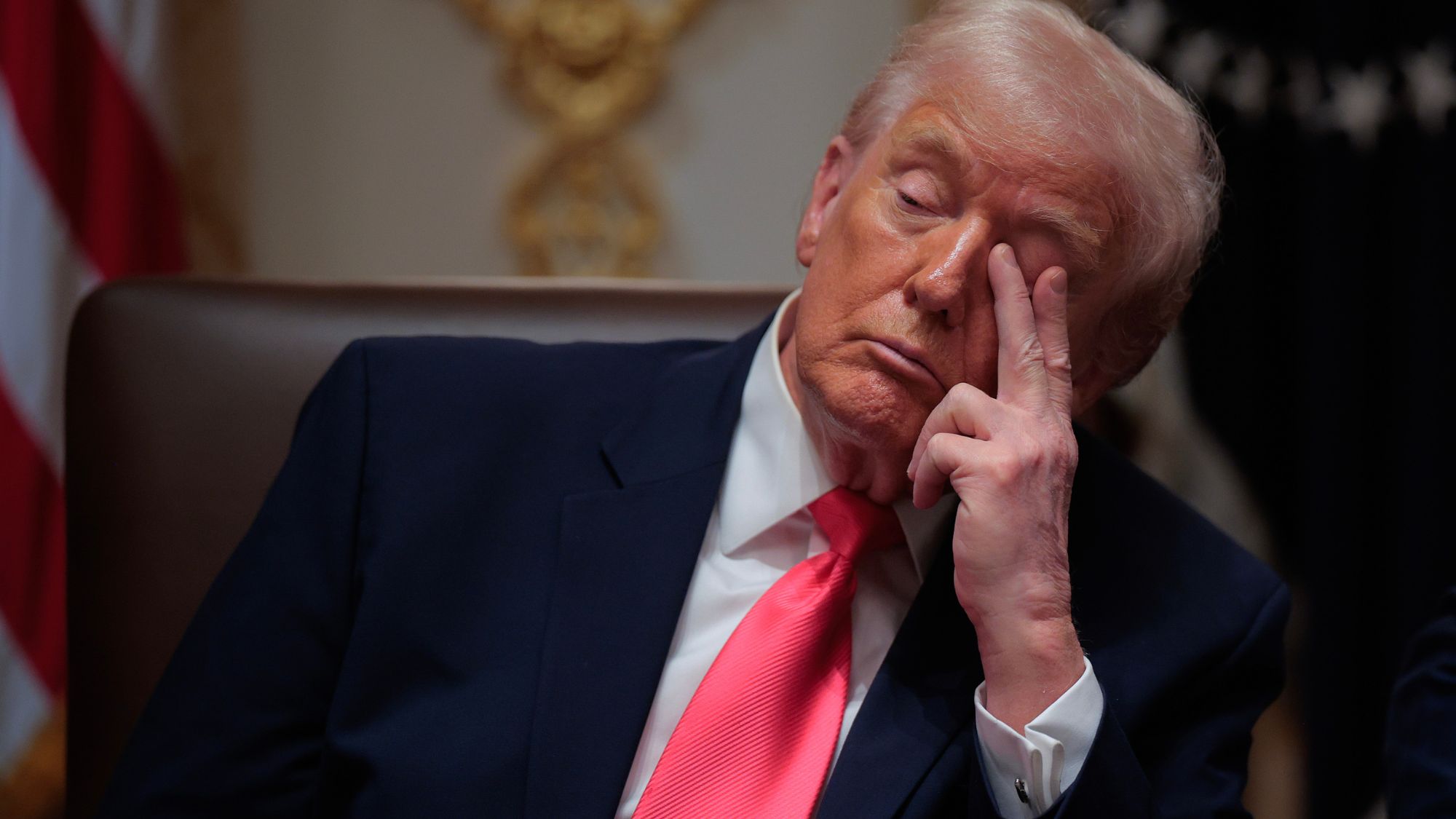Why the future of paper is more complicated than you think
Will America go paperless by 2050? The answer would seem obvious — until you see the data on health records.

Americans are pessimistic about many things: When surveyed, they expect the world will get hotter, the oceans will get dirtier, and water will be harder to come by in decades to come. But, a 2010 Pew survey on science and technology found, there's one area where they see a brighter future: More than 60 percent of Americans think our future will be at least partly free of paper.
Almost two-thirds of those surveyed said they believe paper newspapers, paper money, and letters sent via paper mail would cease to exist by 2050, Pew says.
As a nation, the United States uses a lot of paper. A 2012 Economist study found that Americans ranked seventh in overall consumption, with the average American using the paper equivalent of five 40-foot-tall trees per year. Although that's less than the world leader Belgium (whose eight-tree-per-person total is inflated because it hosts the headquarters of the European Union), the United States still outranks other economic powers like South Korea, Canada, China, and the United Kingdom.
The Week
Escape your echo chamber. Get the facts behind the news, plus analysis from multiple perspectives.

Sign up for The Week's Free Newsletters
From our morning news briefing to a weekly Good News Newsletter, get the best of The Week delivered directly to your inbox.
From our morning news briefing to a weekly Good News Newsletter, get the best of The Week delivered directly to your inbox.
Much of the nation's paper usage still comes from office work, with offices generating some four million tons of paper waste each year, according to the American Forest and Paper Association.
The American office's continual paper addiction is waning, albeit slowly, as technologies like cloud computing and digital scanning become ubiquitous. Industry research from 2012 found that, in a survey of information management firms, 35 percent reported cutting back on photocopies and 44 percent had adopted digital polices for handling mail. But when key documents — like invoices, as cited in the survey — were sent as PDFs, companies reported printing out 77 percent of them.
So in 2009, when the federal government pushed an entire industry to go digital, observers were curious exactly what would happen.
"One of the ideas is that if we move to electronic records, we will get rid of paper," said Julia Adler-Milstein at the University of Michigan. "But everyone says that doesn't happen in reality."
A free daily email with the biggest news stories of the day – and the best features from TheWeek.com
Adler-Milstein is talking about the health care industry, which for the past six years has been on the receiving end of a concerted effort by the federal government to increase digitization of key records. The push began in 2009 with the passage of the American Recovery and Reinvestment Act, which incentivized healthcare providers to begin storing their medical records electronically.
The incentive seems to have worked, at least according to some surveys. Eighty percent of doctors surveyed had adopted an electronic health records system, for example, the American Academy of Family Physicians found in 2014.
But even with an uptick in the number of physicians and hospitals using electronic records, that still hasn't spelled the end for paper.
This is because the ongoing push for digital health records has less to do with cutting back on paper itself and more to do with health outcomes, Adler-Milstein said. Paper records are easy to lose and sometimes lead to inaccuracies like incorrect medication dosages, she said, whereas digital systems can be more secure.
"The vision of paperless healthcare records has really been driven by the push for improved quality and safety in health care," she said. "It hasn't been driven as much by efficiency and environmental purposes."
She says that, in some cases, electronic records have actually led to more paper. Regulations in some states require extensive record-keeping, which means every electronic record has to have a paper duplicate. And many of the digital record systems don't communicate well with each other, she said, so when patients change doctors or visit a new hospital, their records are often printed out and mailed or faxed.
And one unintended side effect of the paperless push in health care is that with digital storage virtually unlimited, doctors can document much more information about a patient than they could with paper, Adler-Milstein said. So when it comes time to print that information, records have bulged in size.
"Even though we've gone electronic, we haven't gone paperless," she said. "It's a funny paradox."
And going entirely paperless poses other challenges unique to the health care industry. With medical records carefully regulated by federal privacy guidelines, doctors and hospitals have been hesitant to jump on the cloud storage bandwagon like other industries. Because they are so easily accessible and convenient, digital records are also a risk.
"The countervailing force is that as we move to electronic health records, there's more information that's easier to copy and paste," Adler-Milstein said.
But that won't stop momentum, she believes. As technology improves and privacy questions are answered, the health care industry as a whole could transition to be entirely paperless in a decade, she thinks. Already, most diagnostic images, like X-rays and other scans, are almost entirely digital, while others, like basic medical records, lag behind.
And when the healthcare industry eventually does go paperless, they will join a growing list of other industries that are also heading in that direction. Increasingly, banks offer online banking options and money management tools, retailers offer digital receipts, and book publishers have long since entered the digital publishing realm.
Even the so-called Common Application, which generations of high school students have used to apply to colleges nationwide, went online-only in 2013.
As with any major technology shift, not everyone is a fan. Ninety percent of surveyed Americans said the federal government's efforts to go paperless hurt older Americans, people without internet access, and the poor, a 2013 poll from Americans for Paper Options, an advocacy group, found.
But the trend towards less paper seems unlikely to slow. Even libraries are joining the ranks of the paperless — a digital-only library opened up outside San Antonio in 2013.
Matt Hansen has written and edited for a series of online magazines, newspapers, and major marketing campaigns. He is currently active in press freedom and safety research with Global Journalist Security.
-
 Trump’s poll collapse: can he stop the slide?
Trump’s poll collapse: can he stop the slide?Talking Point President who promised to ease cost-of-living has found that US economic woes can’t be solved ‘via executive fiat’
-
 Sudoku hard: December 7, 2025
Sudoku hard: December 7, 2025The daily hard sudoku puzzle from The Week
-
 Codeword: December 7, 2025
Codeword: December 7, 2025The daily codeword puzzle from The Week